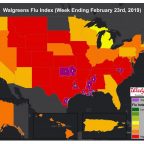Three Big Priorities for Parents Before They Help with College
This year’s federal financial aid forms became available this month, opening the door for parents and students to take advantage of $120 billion worth of federal grants and low-interest loans.
It’s crucial that families make college financing decisions that balance children’s needs with those of parents. The biggest mistake parents make is shortchanging their own retirement saving, either by raiding their accounts or reducing their contributions, said Senior CFP Board Ambassador Jill Schlesinger, CFP®.
“To provide the golden opportunity of college, many parents create a future burden for their kids. After all, if you are struggling to meet your retirement needs, your children will likely be on the hook for you,” said Schlesinger.
An increasing number of Americans are on the hook for the younger generations’ educations. Older Americans are the fastest growing segment of student loan borrowers, according to a Consumer Financial Protection Bureau report released this year. From 2005 to 2015, the number of Americans age 60 or older with one or more student loans quadrupled from about 700,000 to 2.8 million, and average debt load owed by an older borrower roughly doubled from $12,000 to $23,500. About three in four older borrowers used the loans to finance children’s or grandchildren’s college educations.
In her latest contribution to LetsMakeAPlan.org, Schlesinger listed three financial priorities parents should put ahead of paying for their children’s college:
- Paying down consumer debt
- Establishing an emergency reserve fund
- Funding retirement
The Free Application for Federal Student Aid, or FAFSA, form can help families access grants and loans that enable them to send the younger generation to school without breaking the family finances in other ways. There’s more funding available than many people realize. NerdWallet estimates students missed out on $2.7 billion in free FAFSA college aid in 2015, for instance. It said 1.5 million high school graduates didn’t fill out the form at all.
The FAFSA form became available Oct. 1, for students attending school in academic year 2018-2019.






